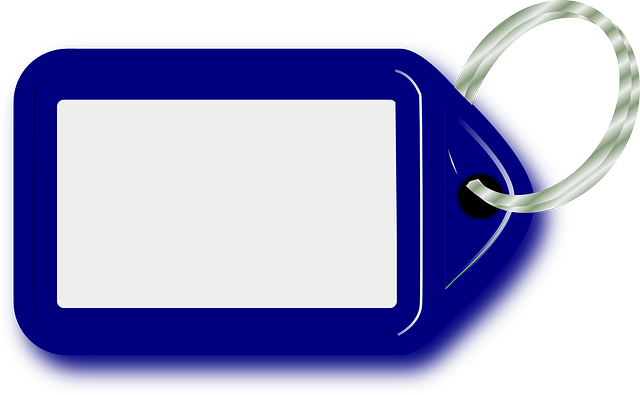Skin tags, benign growths commonly appearing during middle age due to various factors, can be safely removed at home using methods like salicylic acid, cornstarch, cryotherapy, or duct tape. Natural remedies with essential oils and apple cider vinegar are popular but require consistency. However, professional Bradford Tag Removal is advised for complex cases or tags near sensitive areas to prevent complications. Maintaining skin health, regular exfoliation, and choosing loose-fitting clothing can help prevent new tags.
Looking to remove skin tags from the comfort of your home? This comprehensive guide, ‘Bradford Tag Removal’, covers everything you need to know about addressing these common skin growths. From understanding their causes and types to exploring effective at-home removal methods and natural remedies, we provide practical insights. Learn when professional help is necessary and discover prevention strategies to minimize future occurrences.
- Understanding Skin Tags: Causes and Types
- At-Home Removal Methods and Techniques
- Natural Remedies for Effective Skin Tag Disappearance
- When to Seek Professional Help for Skin Tag Removal
- Prevention and Care Tips for Future Skin Tags
Understanding Skin Tags: Causes and Types
Skin tags, also known as acrochordons, are small, soft skin growths that typically appear in areas where skin rubs against itself, such as the neck, armpits, groin, and belly button. They are generally harmless but can be a source of discomfort or embarrassment for some individuals. Understanding their causes and types is essential when considering home removal methods, especially popular in Bradford Tag Removal practices.
There are several factors that contribute to skin tag development. Hormonal changes, pregnancy, obesity, and genetics all play a role. They often form during middle age due to increased insulin levels or as a result of skin friction. There are various types of skin tags, including normal or benign tags, and more complex ones that may be associated with underlying medical conditions like diabetes or hyperthyroidism. Recognizing these variations is crucial for effective and safe home removal techniques.
At-Home Removal Methods and Techniques
Skin tags, those small, soft bumps that can appear anywhere on the body, are often harmless but some people prefer to remove them for aesthetic reasons. Fortunately, there are several at-home removal methods that can help with Bradford tag removal. One popular technique involves using over-the-counter medications like salicylic acid or cornstarch, which can soften and eventually detach the skin tags. Applying these substances directly to the affected area and gently exfoliating can lead to successful removal.
Another approach is cryotherapy, where a small liquid nitrogen probe is used to freeze and cut off the blood supply to the skin tag. This method requires caution and precision to avoid damaging surrounding skin. Home users should consider consulting with a dermatologist for guidance on proper technique and safety precautions. Additionally, some people opt for duct tape removal, where a piece of duct tape is left on the skin tag for several days, gradually breaking down the tissue. Like cryotherapy, this method necessitates careful execution to prevent irritation or infection.
Natural Remedies for Effective Skin Tag Disappearance
Many people opt for natural remedies as a gentle and effective approach to Bradford tag removal. Certain essential oils, like tea tree oil and lavender, have anti-inflammatory properties that can help reduce skin tags. Applying a few drops of these oils directly to the affected area, combined with regular exfoliation, may contribute to their disappearance.
Another popular natural remedy involves using apple cider vinegar. Soaking a cotton ball in apple cider vinegar and gently applying it to the skin tag for several days can lead to its drying out and eventual falling off. It’s important to note that consistency is key when trying these remedies, as results may vary from person to person.
When to Seek Professional Help for Skin Tag Removal
While many people prefer to remove skin tags at home for their convenience and cost-effectiveness, there are instances where seeking professional help from a Bradford Tag Removal specialist is crucial. Despite popular DIY methods, certain skin tag types or locations might require expert attention due to potential risks and complications.
If your skin tags are causing discomfort, pain, persistent irritation, or if they display unusual characteristics like rapid growth, changes in color, or size, it’s advisable to consult a professional. Skin tags near sensitive areas such as the eyes, mouth, or genitals demand extra caution, and a trained specialist can offer tailored solutions to ensure safe removal and prevent potential infections or scarring.
Prevention and Care Tips for Future Skin Tags
To prevent skin tags from forming or appearing again, it’s essential to maintain good skin health and take proper care after any removal process, especially with methods like Bradford Tag Removal. Regularly exfoliate your skin to remove dead skin cells and unclog pores. Moisturize daily to keep the skin hydrated, as dryness can lead to flaking and potential tag development.
Additionally, be mindful of clothing friction. Tight-fitting garments or items that rub against the skin can cause irritation and potentially trigger new tags. Consider using loose-fitting clothing and opt for natural fabrics to reduce skin irritation. Regularly inspecting your skin for any changes can also help in early detection, allowing for prompt action if new skin tags appear.
Skin tags can be an inconvenience, but with the right approach, their removal is achievable at home. From understanding their causes and types to exploring natural remedies and prevention techniques, you now have the knowledge to manage these skin growths effectively. If self-removal proves challenging or concerns arise, seeking professional Bradford Tag Removal services ensures safe and efficient results. Remember, proper care and attention can prevent future skin tags from forming.
